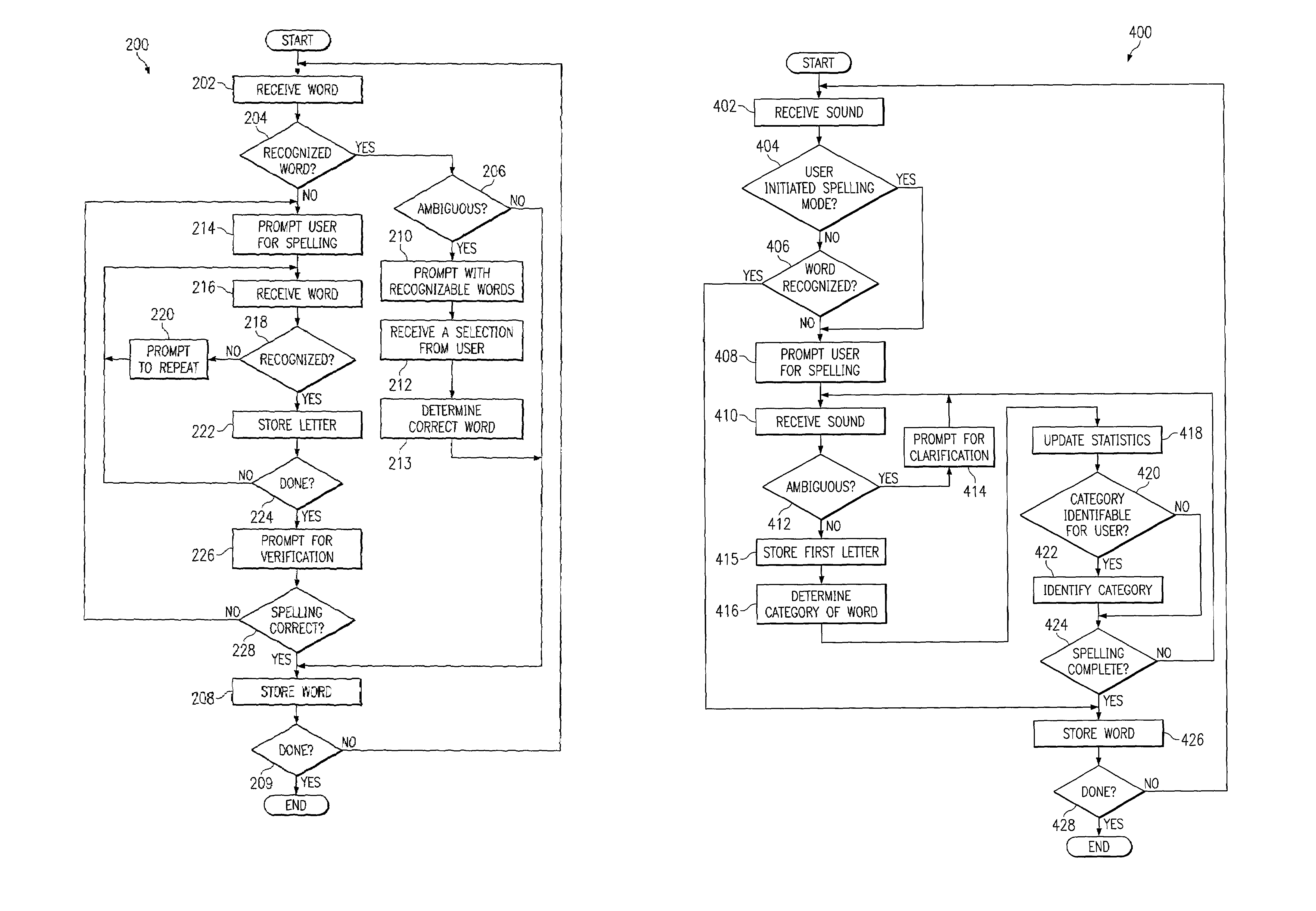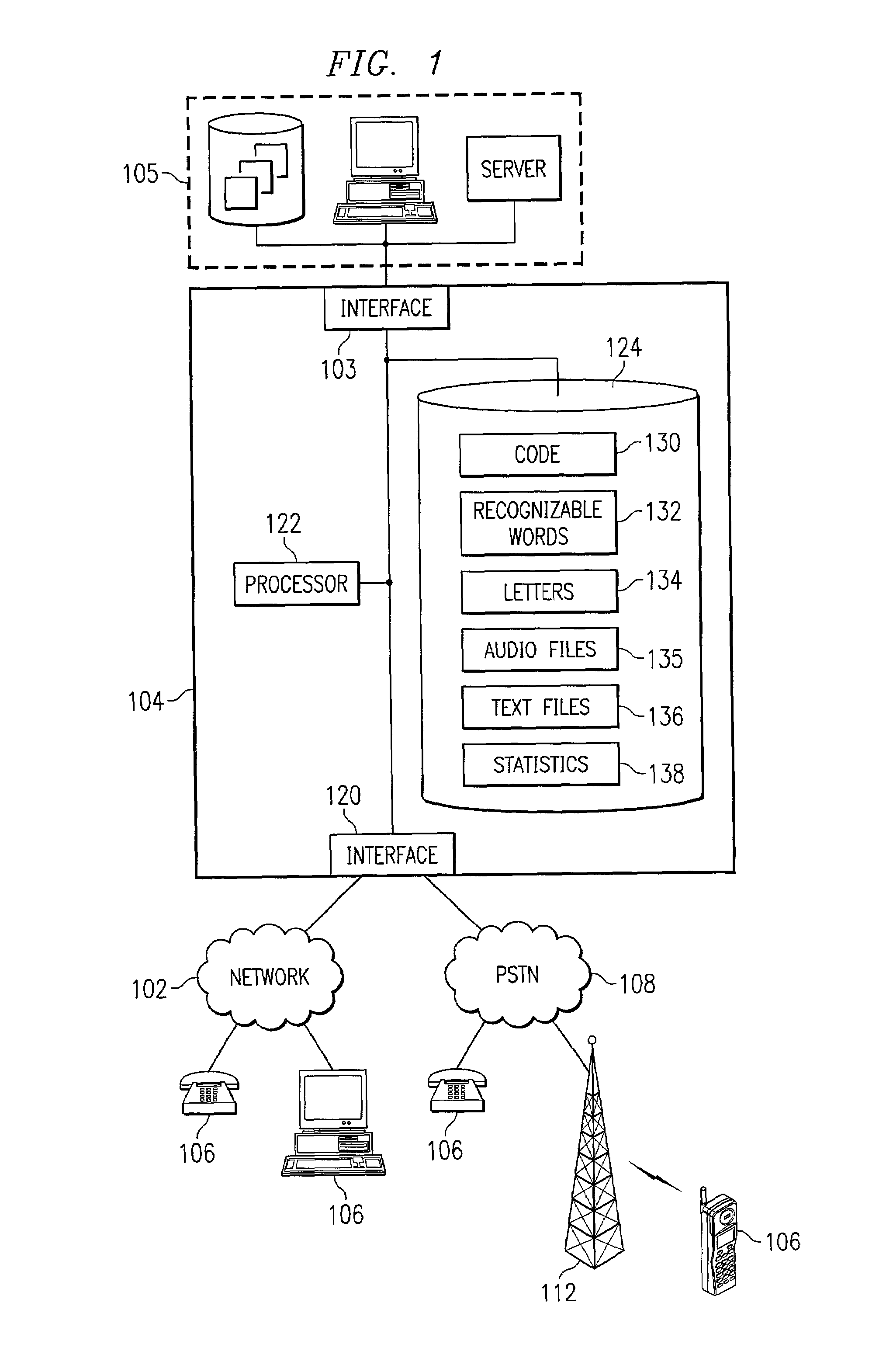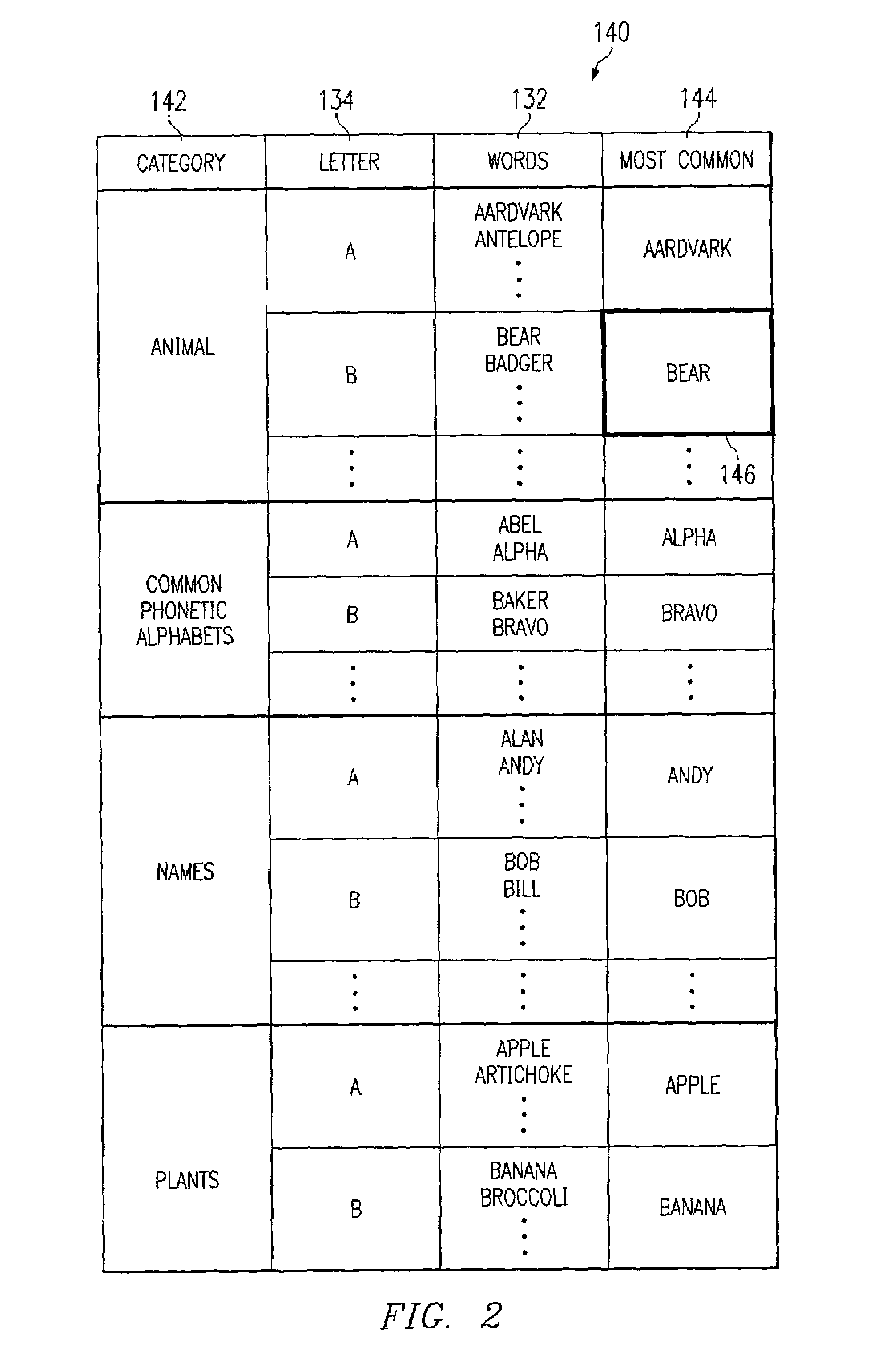Spelling words using an arbitrary phonetic alphabet
a phonetic alphabet and spelling technology, applied in the field of interactive voice response systems, can solve the problems of difficult to determine the spelling of particular spoken words received from users, and lose important information such as people and place names, and achieve the effect of avoiding the disadvantages and problems of determining the spelling
- Summary
- Abstract
- Description
- Claims
- Application Information
AI Technical Summary
Benefits of technology
Problems solved by technology
Method used
Image
Examples
first embodiment
[0033]Either when processor 122 cannot distinguish a word, or when the user instructs IVR 104 to receive a spelling, IVR 104 transitions from a word receiving mode to a spelling mode. In a first embodiment IVR 104 prompts the user with a selection of two or more recognizable words 132 from which the user may select one. IVR 104 selects the words to distinguish between two or more similar sounding words. Thus, for example, if the processor could not tell whether a particular letter was a B or a D, processor 122 could play a prompt to the user such as “Did you say ‘B’ as in Bob, or ‘D’ as in Doug?” The user may then reply with one of the recognizable words 132, which processor 102 then recognizes as one of the recognizable words 132 that was played back. Processor 122 may use this information to distinguish two similar letters. Such an embodiment is also useful when processor 122 has identified two possibilities for a word without being able to tell them apart, such as “bear” and “pea...
third embodiment
[0035]In a third embodiment, processor 102 may prompt the user to spell a particular word, and but not necessarily require the user to spell the entire word using a phonetic alphabet. For example, processor 122 could receive a combination of letters 134 and recognizable words 132 and use the combination to spell the words such as receiving “B as in banana, O, G, A as in apple, R, T” from a user. In a variation on this embodiment, processor 122 does not have separate word recognition modes and spelling modes. In such a variation, processor 122 receives individual letters along with recognizable words 132. Processor 122 may also interpret certain recognizable words 132 as letters based on cues from the user. For example, while speaking a series of words, the user might say “B as in Bob”, and processor 122 would recognize that Bob is to be used as a cue for the proper spelling of a word, rather than storing the literal phrase “B as in Bob.”
[0036]Once IVR 104 recognizes words, IVR 104 c...
PUM
 Login to View More
Login to View More Abstract
Description
Claims
Application Information
 Login to View More
Login to View More - R&D
- Intellectual Property
- Life Sciences
- Materials
- Tech Scout
- Unparalleled Data Quality
- Higher Quality Content
- 60% Fewer Hallucinations
Browse by: Latest US Patents, China's latest patents, Technical Efficacy Thesaurus, Application Domain, Technology Topic, Popular Technical Reports.
© 2025 PatSnap. All rights reserved.Legal|Privacy policy|Modern Slavery Act Transparency Statement|Sitemap|About US| Contact US: help@patsnap.com



